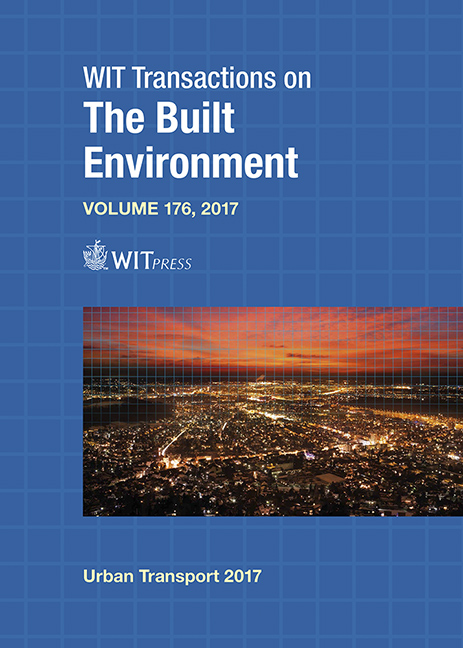APPLICATION OF A METHODOLOGY FOR THE SPATIAL ANALYSIS OF AIR POLLUTANT LEVELS AT THE DARCY RIBEIRO CAMPUS OF THE UNIVERSITY OF BRASÍLIA
Price
Free (open access)
Transaction
Volume
176
Pages
10
Page Range
351 - 360
Published
2017
Size
875 kb
Paper DOI
10.2495/UT170301
Copyright
WIT Press
Author(s)
RODRIGO OLIVEIRA WERNECK, FABIANA SERRA DE ARRUDA
Abstract
Transport modes, in particular those using fossil fuels, are considered to be responsible for atmospheric and noise pollution, causing damage to the landscape and environmental degradation. The cities growth, which is not always accompanied by significant investments in public mass transport, stimulates the expansion of individual transportation use. Some universities are beginning to investigate factors that may influence the more sustainable mobility on their campuses, thus promoting the improvement in quality of life and circulation. The Darcy Ribeiro Campus of the University of Brasília (UnB) acts as a traffic generator pole, attracting a large number of automobiles that bring a series of negative consequences, such as congestion points, points of conflict with pedestrians and cyclists, depletion of public spaces and environmental impacts (air and noise pollution). Therefore, the objective of this project was to apply a methodology for the spatial analysis of the levels of atmospheric emission by the automotive vehicles in the Campus Darcy Ribeiro of the UnB. By means of vehicles volumetric counting, it was possible to generate carbon monoxide emission charts of the campus using Arcgis® software, identify critical points associated with air pollution and compare two scenarios, normal and optimistic. It was possible to conclude that, according to the estimates presented, the private transport in UnB is the largest source of air pollution. The figures presented, together with the charts generated, show that the vehicular pollution is present all over the campus perimeter and it represents a serious concern for the health of the university population. Some measures can be adopted to make the university a more sustainable environment regarding individual transportation, encouraging the use of active transport such as walking and pedaling and the use of public transport. Allying active transports with a well-designed transportation planning appropriate for the campus are factors that help the quality of life in college.
Keywords
transport modes, air and noise pollution, environmental impacts, spatial analysis, sustainable mobility





